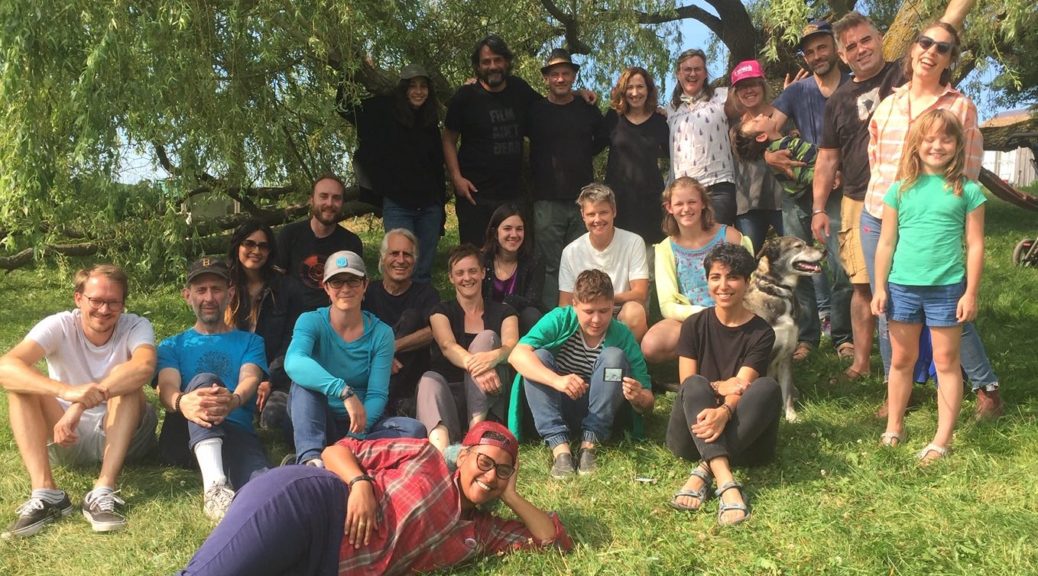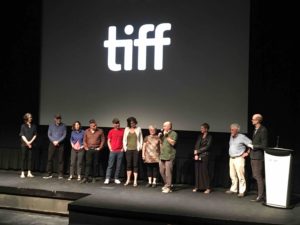EXCERPT from Film Lab to Film Farm by Kim Knowles (Experimental Film and Photochemical Practices, Palgrave MacMillan, 2021.)
Over the next few days, our world reduces to the contours of this barn and the surrounding fields, but I feel my mind expanding into new terrain. We are taught how to operate the Bolex camera, how to hand-process as negative and reversal with traditional chemistry, as well as eco-friendly formulas with local flowers and plants. We plunge ourselves into the colorful world of tinting and toning, the handmade and largely unpredictable processes that define such films as Jennifer Reeves’ We Are Going Home (1998), Eve Heller’s Behind This Soft Eclipse (2004) and Penny McCann’s Crashing Skies (2002). We experiment with solarization in the dark room, each of us secretly hoping to get results as striking as Chris Chong’s Minus (1999), an uncut stream of superimposed movements on a single roll of film that were apparently produced in one sleepless night at the barn. read more
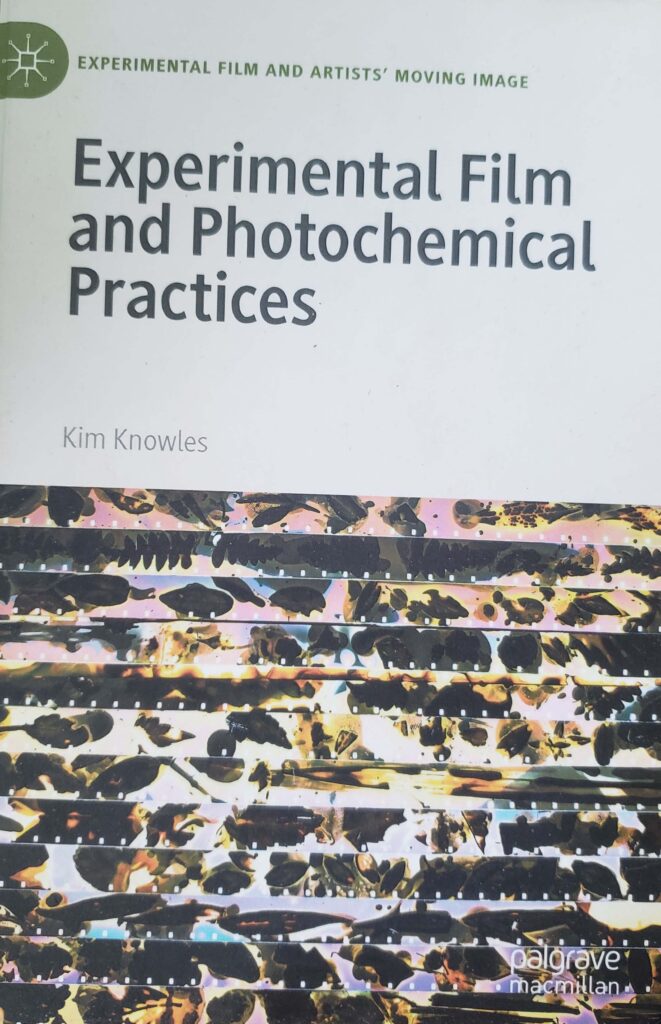
CFMDC Panel on Kim Knowles book “Experimental Film and Photochemical Practices” here
Film Farm 25th Anniversary 2019
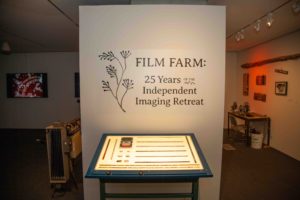
Exhibition curated by Michelle Lovegrove Thomson
Kim Knowles talks about Film Farm at Tiff Bell Lightbox 2019; and Q & A
Screenings Curated by Chris Kennedy
Program 1: We Are Going Home
Program 2: Crashing Skies
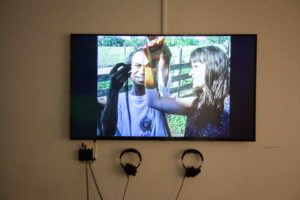
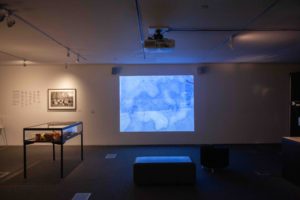

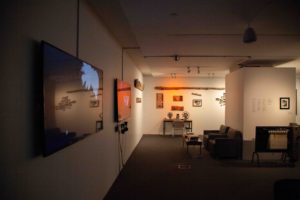
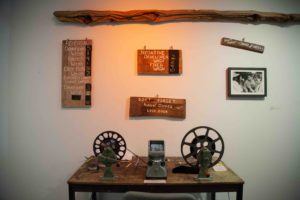
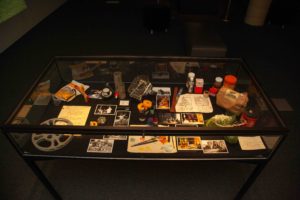
If there is life in the BARN: it will survive. Philip Hoffman interviewed by James Holcolme
Can you talk a little about the history of the land and buildings before they became a rural lab? Can you paint a textual picture of the landscape over the seasons and how the equipment is bedded down for the winter – what do you have to do to keep quite complex machines working and functional?
I got the property in the early 1990’s, with my partner at that time Marian McMahon, with the idea of creating a kind of school for image-making. The old stone house was built by Henry Chilton in the 1880’s, and had been used for farming ever since. The farm is approximately 50 acres, and some of it is used by my neighbours for farming purposes, in exchange for various things over the years… Erwin dug the pond and built a foundation for an extension to the house. Tom plows my lane and gives me a freezer of meat every year from his grass fed animals that graze on the land. We started the workshop in 1994 with Rob Butterworth, Tracy German and Marian McMahon, and at the time my neighbour had cows in the bottom of the barn, so we had mooing sounds echoing through the barn while we screened films! The old barn, built probably in the 1920’s is an old Mennonite constructed structure, held together solely by wooden pegs. Over the years my partner, Janine Marchessault, and I have had to maintain the barn by having our friend Jon Radojkovic, who’s an expert in timber frame barns, help to keep it standing, as the barn shifts. In 2007 he did a major repair, as the barn was shifting quickly. My neighbour Wayne put some cement posts at the back of the barn and Jon tightened some of the major beams using a permanent winching system, with thick wire, and replaced some beams by jacking the barn up…the jacking is done over a few months, raising the barn a fraction of an inch every week. So the barn is in a constant state of repair. Every winter the animals, the wind and snow take over the barn. We cover everything in tarp and hope the machines start up again in the spring!
Read the complete interview here.
